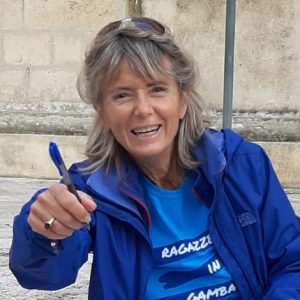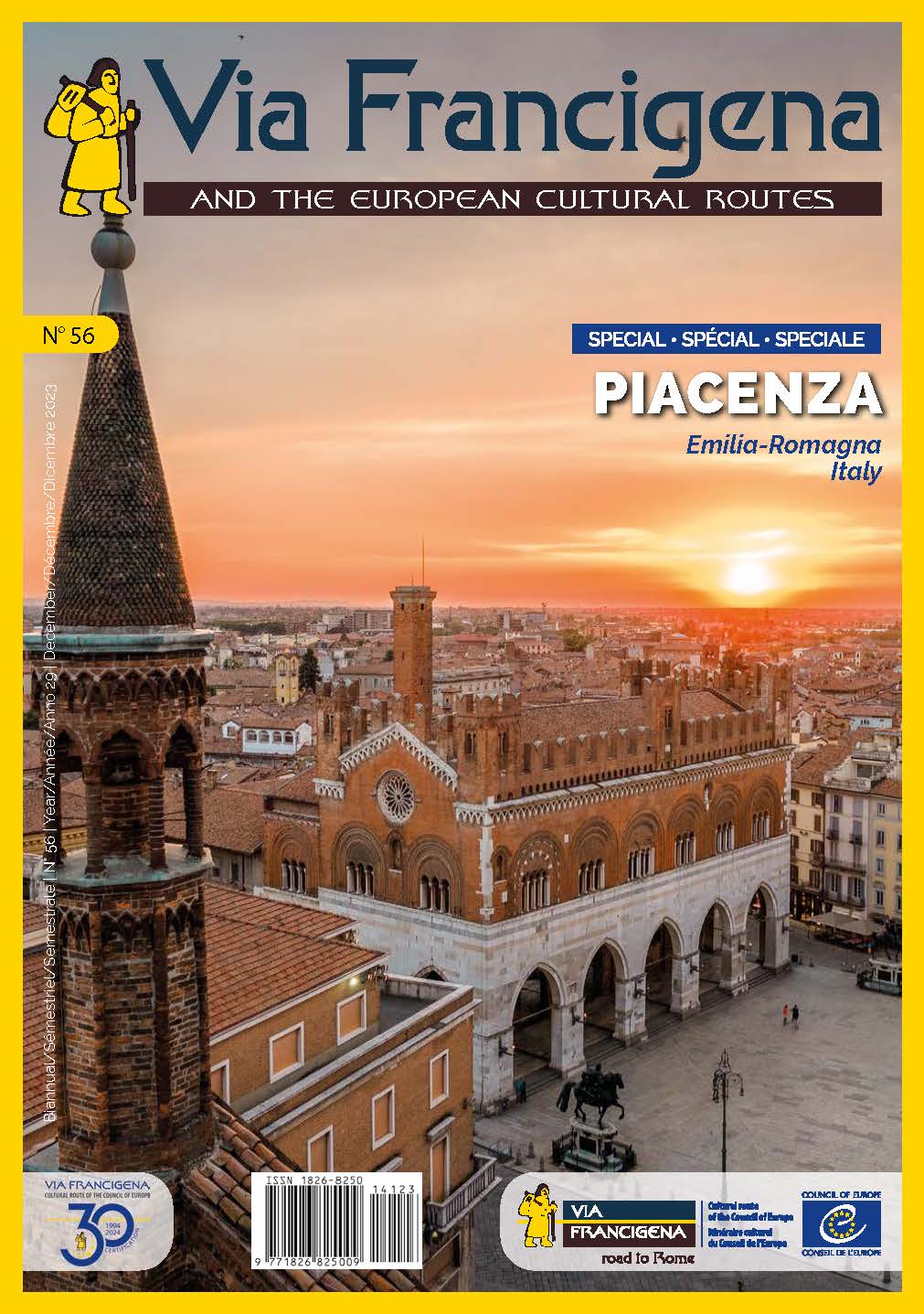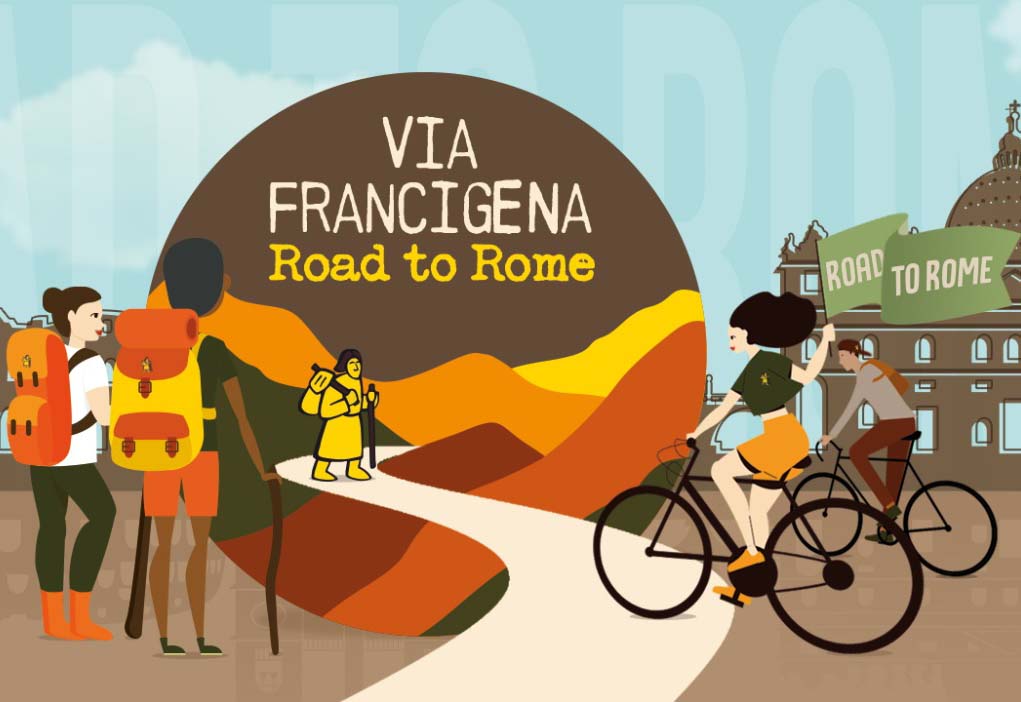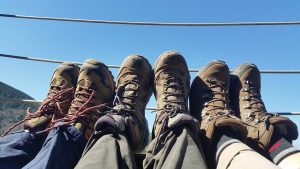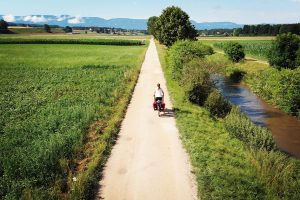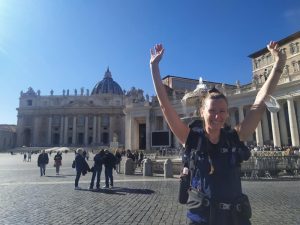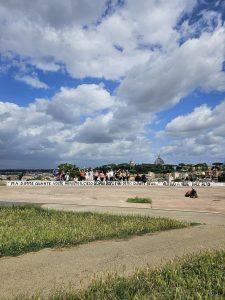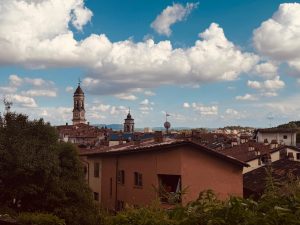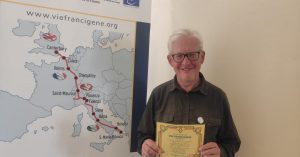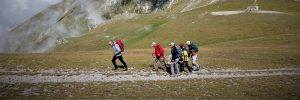He was born on the Via Francigena, in Cannole, and even though his first pilgrimage was to Santiago, his great love is Sigeric’s route. A long-standing passion and deep conviction have driven him to become one of the modern architects of the stretch that leads from Rome to Santa Maria di Leuca, on the one hand with relational skills and engagement, and on the other hand with creativity and industrious hands: thanks to Fabio and his friends, the Via Francigena in Salento boasts the colors of the rainbow.
Recycled materials along the route speak of love for the land
I met Fabio Stomaci right on the Via Francigena in Southern Italy, which a few years ago was not marked as it is now, and even fewer years before that it was even less so. Approaching Cannole, immersed in a landscape dominated by the soft colors of the Mediterranean nature, the green of the olive trees, the brown of the earth, the light of the stone, one is struck by sudden spots of vibrant colors. Benches made from pallets, signs marking intersections that were once truck tires, logs transformed into signposting. And this momentum initiated by him has also spread to neighboring villages, such as Serrano, where one of the most famous signs of the Via Francigena was made from a retired surfboard. All with recycled materials, pulled out of heaps of waste, painted and cared for in a way that speaks a universal language: that of caring for one’s territory. That of welcoming with open arms the people who traverse it.
With all due respect to those who treat the land near their homes like a landfill.
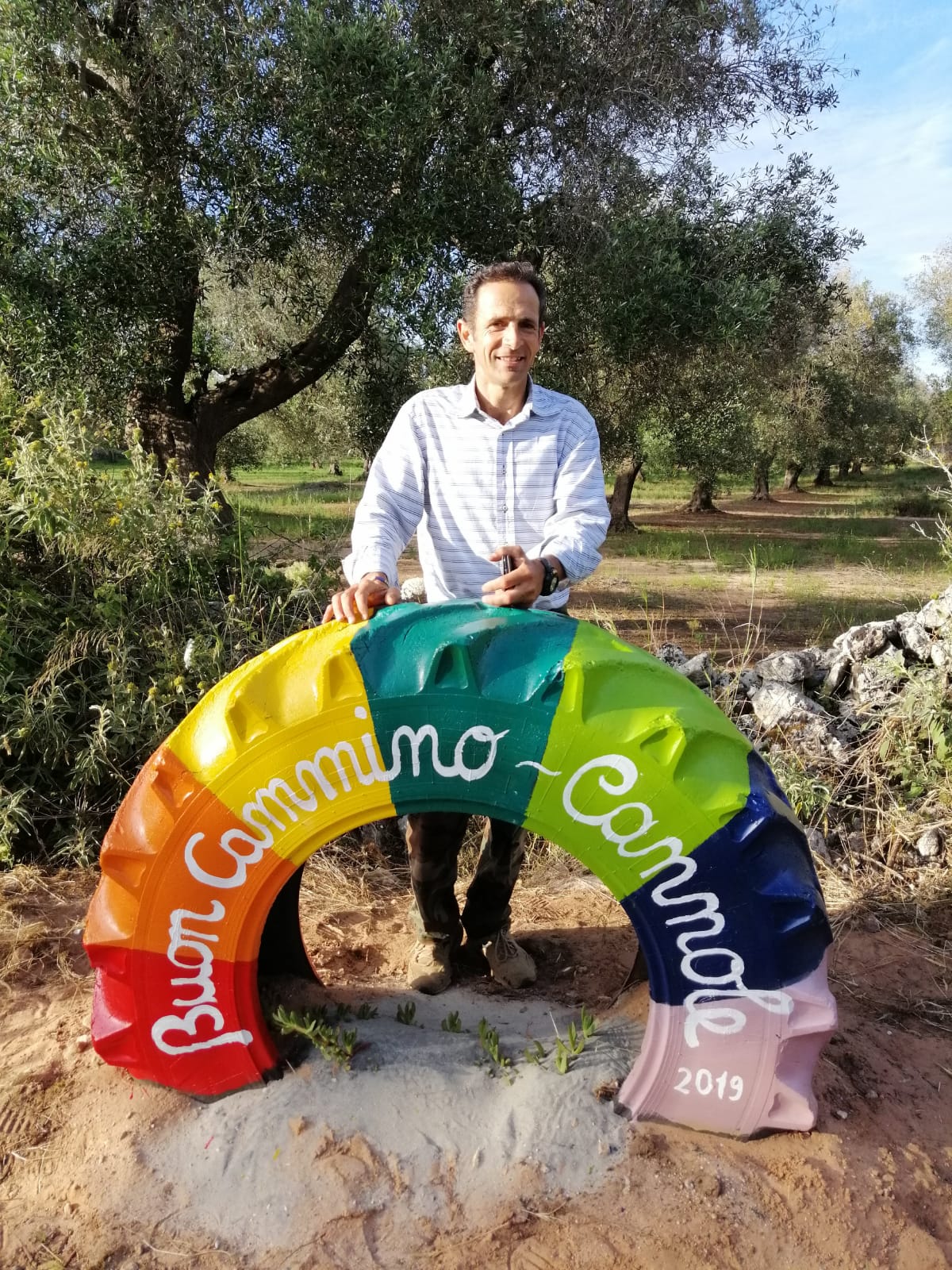
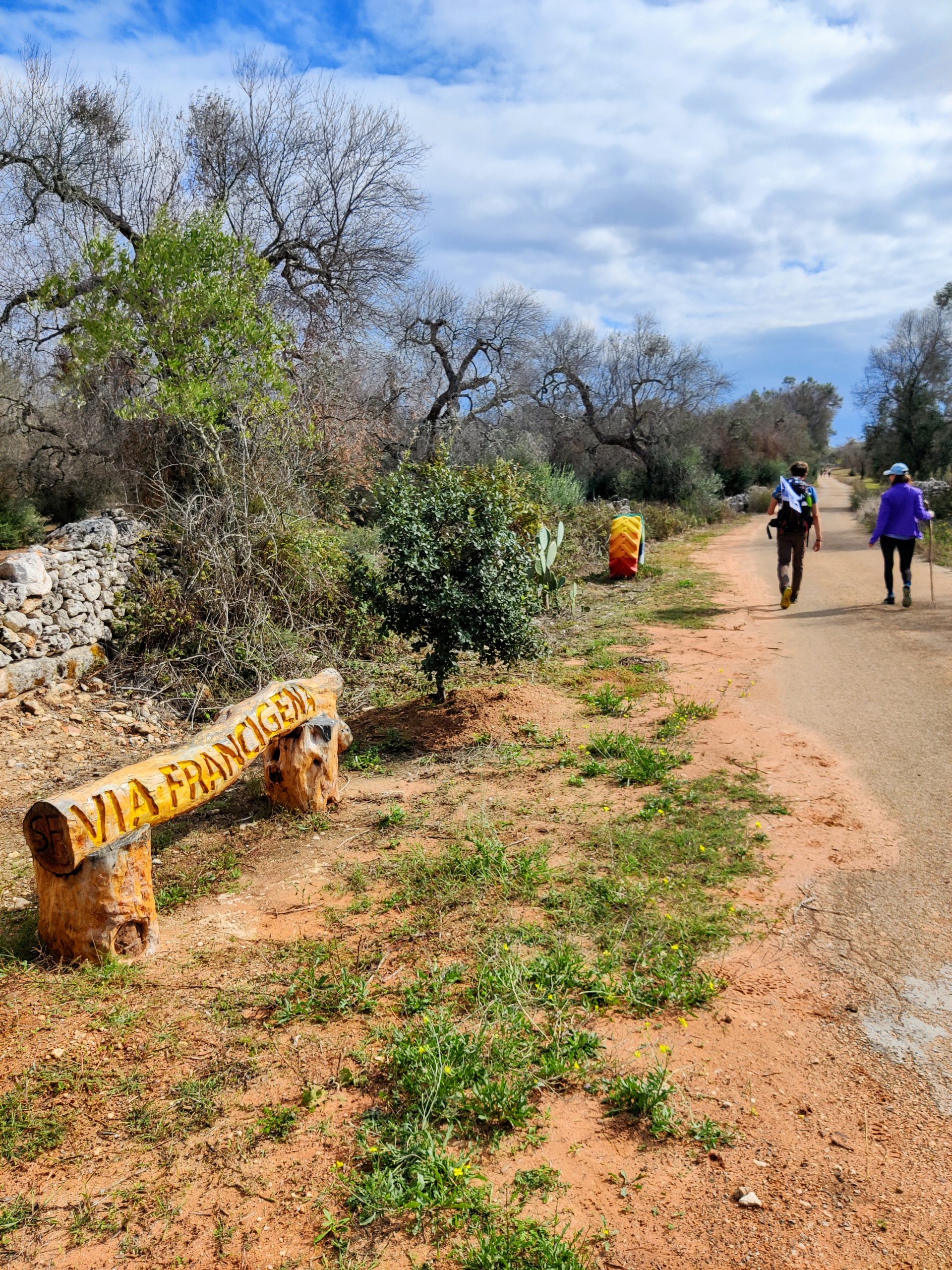
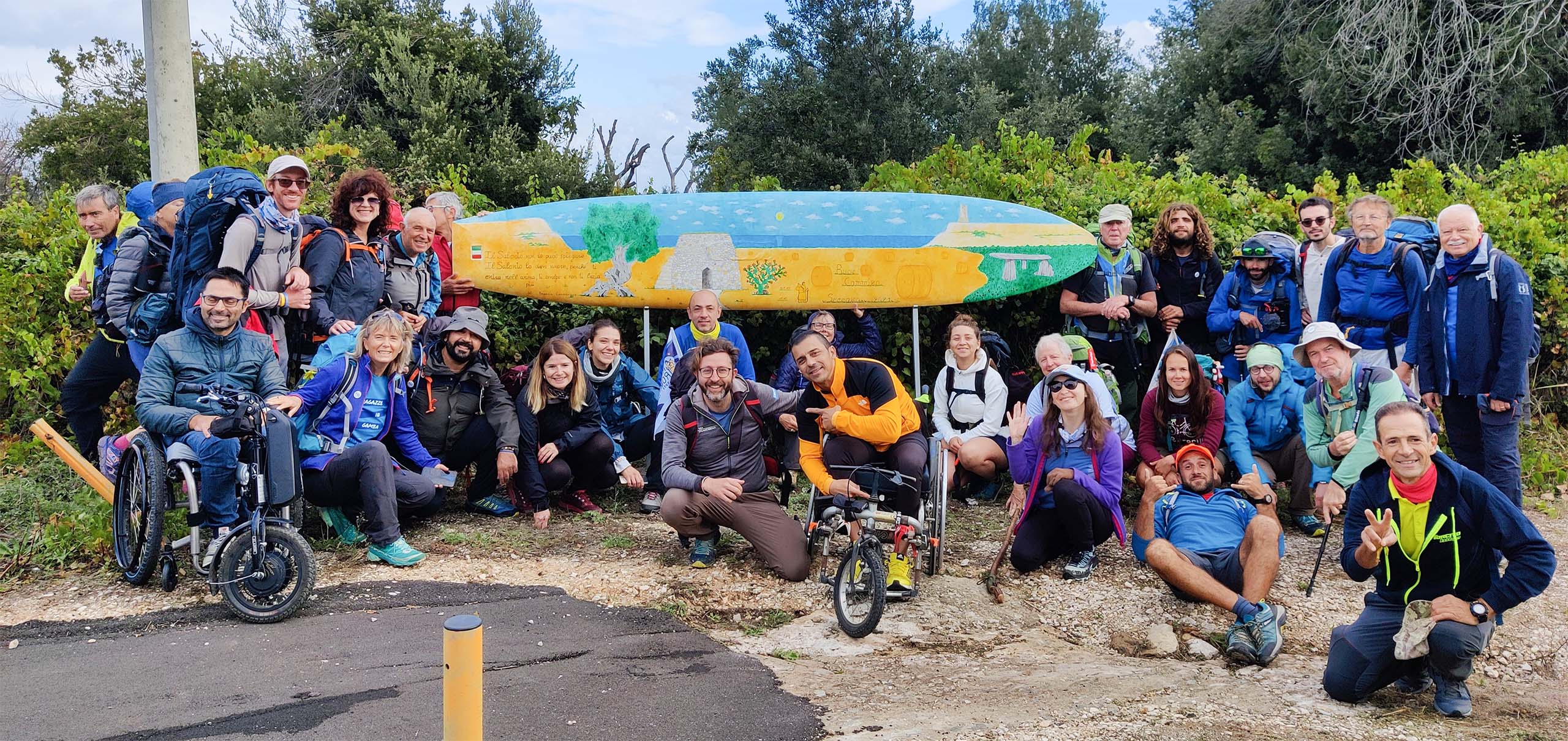
The desire to do something to enhance the Via Francigena
Fabio is, first and foremost, a sportsman and a walker. He can’t stand still. But he had never experienced how rejuvenating it is to travel on foot until, in 2012 – inspired by a book – he embarked on his first pilgrimage, Santiago precisely, the French route. “I was thrilled with this new world I had discovered,” he recalls, “with this encounter between peoples that happens on the trails and in the hostels, with the harmony that you can feel in the air.” Back home, he delves deeper into this new passion, discovering that pilgrimages are ancient routes, and among them is the Via Francigena. “So it passes through my lands.” From here arises the desire to do something for the development of this route, leading him to seek interaction with professionals and to take on a political role in the municipality of Cannole. Fabio’s objective: to enhance the Via Francigena in his home territory.
Cannole, with its 1800 inhabitants, is located on the Traiana-Calabra axis, which runs between Brindisi, Lecce, and Otranto, along with some evocative abandoned villages such as Cerceto and Anfiano. In recent years, in Salento, a movement has become increasingly active, led by figures such as Professor Anna Trono, Fabio Mitrotti, Luigi Del Prete, and Giorgia Santoro, aiming to extend the Francigena route to Santa Maria di Leuca, reconstructing the paths of the ancient pilgrims. In 2017, the Association “La casa delle Comunità Ospitanti degli itinerari Francigeni della Puglia Meridionale” was founded, as it became apparent that beyond its religious significance, the pilgrimage had great potential for enhancing the territory. The route from Brindisi to Leuca, passing through Cannole, was indeed adopted, but much of what is accomplished does not come from institutions. “Many mayors,” Fabio recalls, “signed the establishment of the Association as part of our awareness campaign, but then failed to take any concrete action.”

A tractor wheel becomes signposting, a pallet becomes a bench
Fabio, however, is convinced about his mission and he’s not the type to give up. So he starts with DIY projects, convinced that “within 5 years, 2,000 people will pass through these trails.” For him, it is essential that when they arrive in his land, they find a worthy welcome. Among the problems to overcome is the lack of foresight by many locals, who leave waste on the edges of dirt roads or take away what is built to beautify the route. Fabio starts cleaning up areas that were essentially used as illegal dumps, creates shaded areas by planting trees, and flowerbeds with agaves, which no one takes away because they are everywhere. “They thought I was crazy, but gradually people joined in, friends who wanted to support me, fellow villagers who became aware of the importance of re-evaluating the territory. Over time, the awareness of the locals has changed significantly.”
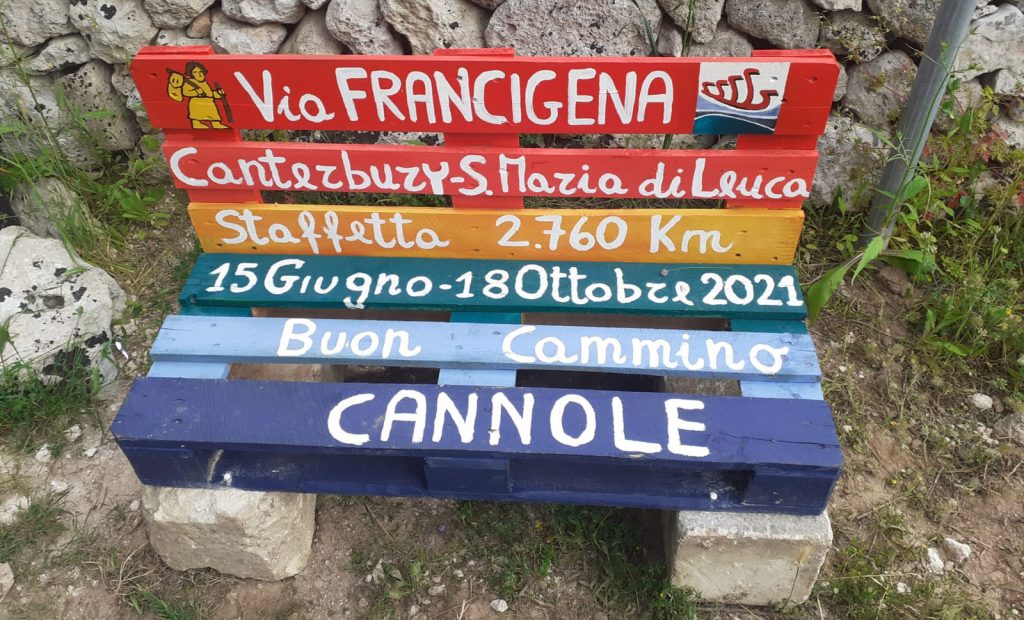
It’s a job that lasts for years and requalifies the entire territory, practically at zero cost. There are no resources in the municipal coffers, so every corner is cleaned up by volunteers – among whom Fabio is always at the forefront – and equipped with pine trees (provided by the Forestry Service) that, in a few years of growth, provide shade in these sun-drenched lands; then strawberry trees are planted to offer spontaneous fruits, benches for rest and directional signs are installed. Every problem is solved with goodwill and ingenuity. Someone, on a freshly cleaned stretch, throws away a tractor wheel. How to dispose of it? The problem turns into an opportunity that characterizes all the kilometers of the Francigena around Cannole today: “I got the idea of not moving the wheel but instead coloring it, always with the help of many volunteers who are eager to support any initiative. After painting the wheel, I got the idea of painting the benches.” He convinces a few companies to provide the paint for free, and today the benches with rainbow colors and aphorisms are photographed and posted by walkers from all over the world.
A homemade hospitality network
The group of volunteers is expanding more and more, and involving friends from the “Urpi te macchia,” another very active association in the area, the Pilgrim’s Tree is created: a signpost totem that is perhaps the most photographed attraction along this stretch of the Via Francigena. An abandoned Hypogeum is restored by digging away tons of material. Reviving the ancient tradition, the Templar Cross becomes a place where pilgrims can leave their thoughts, a trace of their passage. Many ideas that help to deeply understand the territory and enrich the journey, making it unforgettable.
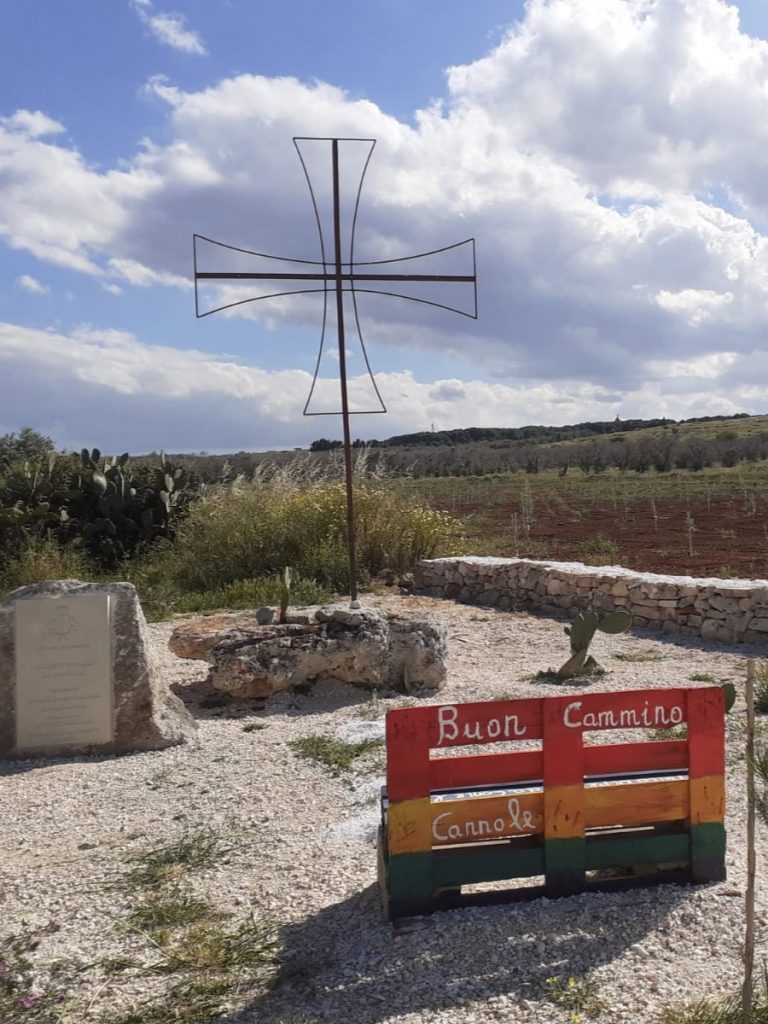
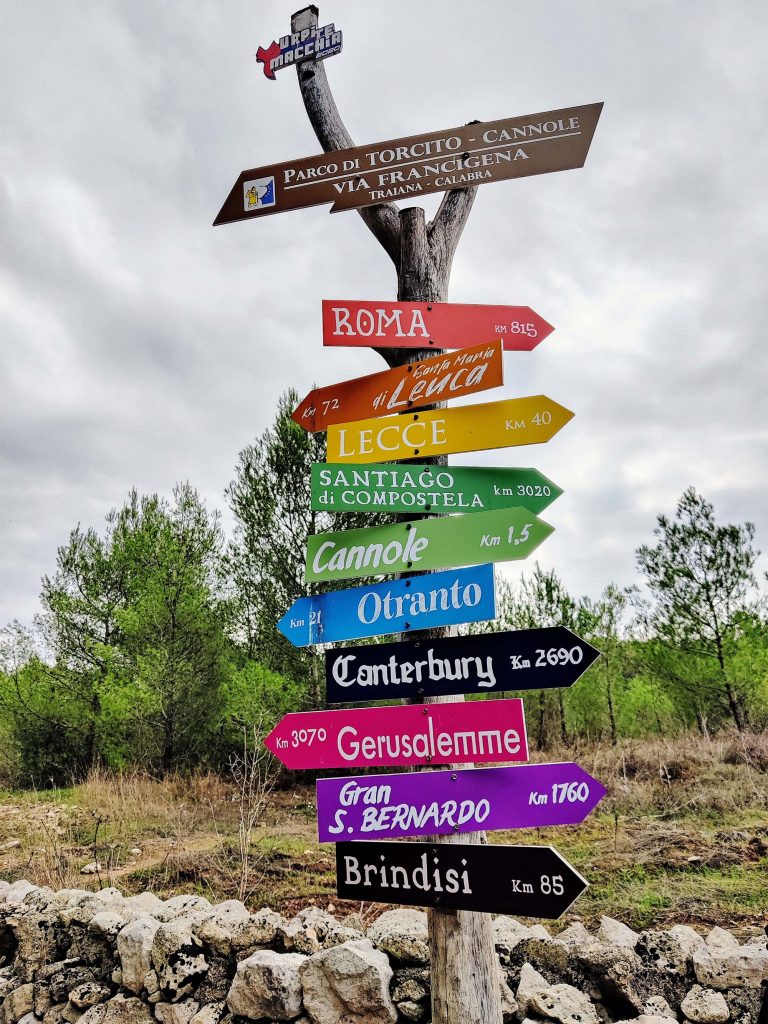
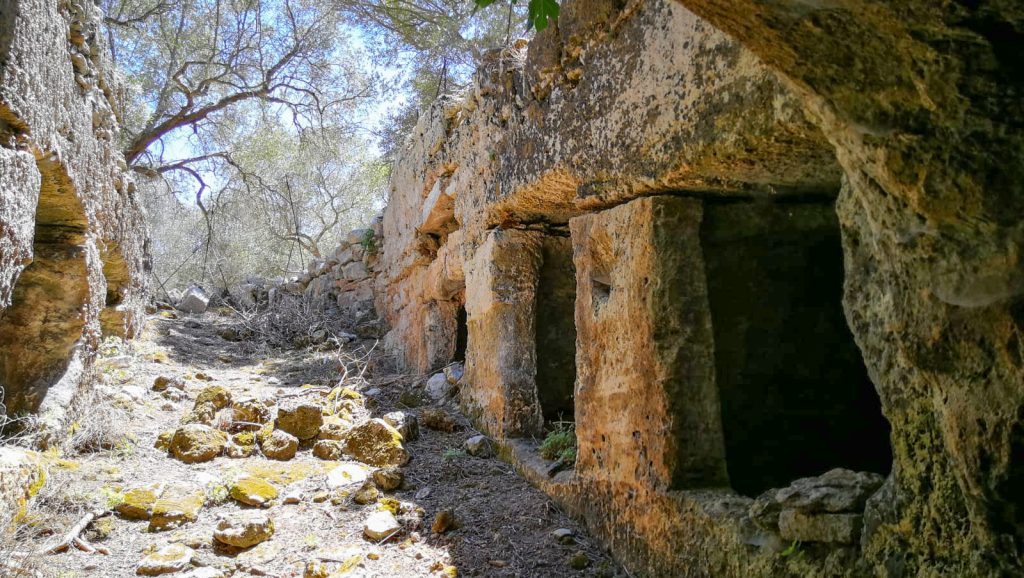
The model of Santiago inspires another aspect of Fabio’s activity, which is that of donation-based hospitality. Thus, he contributes, with the Association, to the creation of a network with parish priests and other support points, starting from his own home, along the stretch from Brindisi to Leuca, where pilgrim menus are also available for 15 euros. “There’s still a taste of authenticity. Pilgrims eat with us at the table. If we were to do it every day, it would be burdensome, but like this, it becomes a joy. Over the years, this spontaneous movement of people opening their homes has formed, organized for any emergency, helping and intervening, and this makes the difference.”
The Via Francigena always leaves something behind
Meanwhile, in 2019, a significant milestone was reached: with the support of the European Association of the Via Francigena, the stretch from Rome to Santa Maria di Leuca was extended the status of a cultural itinerary of the Council of Europe, previously reserved only for the Canterbury-Rome route. Official recognition has been granted, and it’s a reality because even the most skeptical now see an increasing number of travelers with boots and backpacks, especially foreigners, revitalizing the area even if they don’t bring in substantial revenue. “Cannole isn’t a stopping point, but the effect of their passage is evident. The Via Francigena is like a river, as it flows, it always touches its banks, and even if it doesn’t stop, it always leaves something behind.”
And indeed, this slow flow of walkers is changing minds and helping to improve the municipality’s finances; for this reason, today, prompted by Fabio, efforts are being made to acquire the archaeological area of Borgo Anfiano. The project involves a series of excavation campaigns by the University that would further enrich this section of the trail. Also, Borgo Cerceto, in the Torcito Natural Park, has been almost entirely restored, with the support of the municipal administration; crossing this area leaves one impressed, and transported back to the Middle Ages.
Everything that is seen and appreciated in these kilometers is continuously and patiently maintained, repaired, refreshed. But Fabio continues to spread love for the Cammino in other ways as well. The next initiative is participation in “A Billion Steps for Peace,” a national project involving all walking routes. With the support of associations and volunteers, the Via Francigena will be travelled by walkers and students from elementary schools and up, in 7 stages, from Brindisi to Santa Maria di Leuca.
Buon Cammino!




